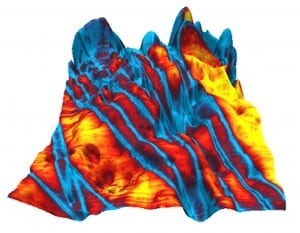
Ferroelectrics are pretty remarkable materials
At the heart of computing are tiny crystals that transmit and store digital information’s ones and zeroes. Today these are hard and brittle materials. But cheap, flexible, nontoxic organic molecules may play a role in the future of hardware.
A team led by the University of Washington in Seattle and the Southeast University in China discovered a molecule that shows promise as an organic alternative to today’s silicon-based semiconductors. The findings, published this week in the journal Science, display properties that make it well suited to a wide range of applications in memory, sensing and low-cost energy storage.
“This molecule is quite remarkable, with some of the key properties that are comparable with the most popular inorganic crystals,” said co-corresponding author Jiangyu Li, a UW associate professor of mechanical engineering.
The carbon-based material could offer even cheaper ways to store digital information; provide a flexible, nontoxic material for medical sensors that would be implanted in the body; and create a less costly, lighter material to harvest energy from natural vibrations.
The new molecule is a ferroelectric, meaning it is positively charged on one side and negatively charged on the other, where the direction can be flipped by applying an electrical field. Synthetic ferroelectrics are now used in some displays, sensors and memory chips.
In the study the authors pitted their molecule against barium titanate, a long-known ferroelectric material that is a standard for performance. Barium titanate is a ceramic crystal and contains titanium; it has largely been replaced in industrial applications by better-performing but lead-containing alternatives.
The new molecule holds its own against the standard-bearer. It has a natural polarization, a measure of how strongly the molecules align to store information, of 23, compared to 26 for barium titanate. To Li’s knowledge this is the best organic ferroelectric discovered to date.
via University of Washington – Hannah Hickey
The Latest Streaming News: Ferroelectrics updated minute-by-minute
Bookmark this page and come back often
Latest NEWS
Latest VIDEO







